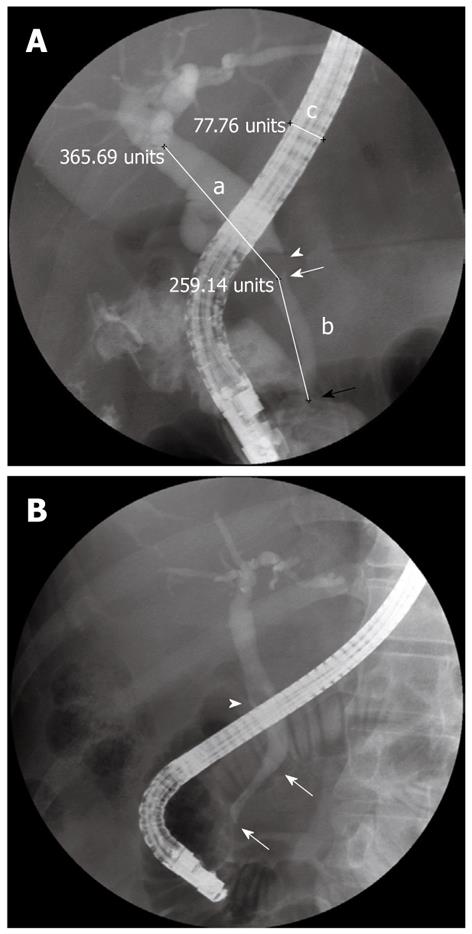Copyright
©2012 Baishideng Publishing Group Co.
World J Gastroenterol. May 21, 2012; 18(19): 2396-2401
Published online May 21, 2012. doi: 10.3748/wjg.v18.i19.2396
Published online May 21, 2012. doi: 10.3748/wjg.v18.i19.2396
Figure 1 Endoscopic retrograde cholangiogram showing the poorly expandable distal common bile duct (arrows) and the more dilated upstream bile duct.
A: The arrowhead indicates the stone. Line a and line b indicate the length of the non-poorly expandable bile duct and the poorly expandable segment. The actual lengths were measured after correction for the magnification with the known diameter of the duodenoscope on the endoscopic retrograde cholangiography (line c). The distal common bile duct angle was defined as the angle formed by line a and line b; B: The stone (arrowhead) is floating in the non-poorly expandable bile duct.
- Citation: Cheng CL, Tsou YK, Lin CH, Tang JH, Hung CF, Sung KF, Lee CS, Liu NJ. Poorly expandable common bile duct with stones on endoscopic retrograde cholangiography. World J Gastroenterol 2012; 18(19): 2396-2401
- URL: https://www.wjgnet.com/1007-9327/full/v18/i19/2396.htm
- DOI: https://dx.doi.org/10.3748/wjg.v18.i19.2396









